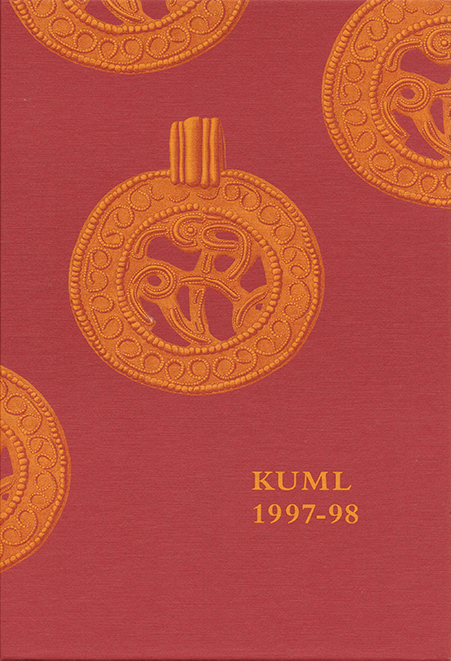An Early Roman Iron Age grave with ring brooches from Vandet School in Thy
DOI:
https://doi.org/10.7146/kuml.v41i41.113362Keywords:
Early roman, iron age, grave, vandet school, thyAbstract
An Early Roman Iron Age grave with ring brooches from Vandet School in Thy
This article reviews the results of the excavation of an Iron Age burial ground at Vandet School in the parish of Vester Vandet in the county of Thisted. The burial ground lies to the south of the well known Bronze Age mound of Sækhøj (fig. 1).
Construction work while building a new school led to the discovery and subsequent excavation of the burial ground in 1959. The Danish National Museum excavated seven inhumation graves which dated to the Early Roman Iron Age. The graves were built of flat limestone blocks and had a N-S orientation. The dead were laid on their right sides with their legs bent, facing East (figs. 2-3). One of the crania has signs of trepanning.
The grave goods generally consisted of pottery vessels and iron knives. However, two of the graves also contained beads: a millefiori bead and a gold foil bead. In four of the graves there were also heaps of 18-22 small stones. This type of grave is well known in the area. The pottery is mainly of a type with stamped decoration or an incised angle or meander pattern, which does not seem to differ from the rest of the Iron Age pottery from the area.
Grave 7, however, is remarkable for its special grave goods. These consist of five earthenware vessels, an iron hair pin, two bronze penannular brooches and a silver fibula (Almgren V:103) (figs. 4-5). The grave goods indicate that the dead person was a woman belonging to the higher ranking part of society.
The set of pottery vessels includes a vessel which seems to have a cogwheel ornamentation. This ornamentation, as well as the penannular brooches, suggests a connection with the Elbe-Germanic area.
Penannular brooches occur from the PreRoman Iron Age through the Roman Iron Age right up to the Viking Period, when they take quite another form. Only the typology, chronology, distribution and function of Pre-Roman and Roman Iron Age penannular brooches and the related omega fibulas will be discussed here.
The Pre-Roman Iron Age penannular brooches are different in shape and ornamentation to the brooches of the Roman Iron Age (fig. 6). It should also be noted that there are no penannular brooches from the very late Pre-Roman and the very early Roman Iron Age. There is a break in the sequence. The main area of distribution for Roman Iron Age penannular brooches is around the Elbe (figs. 7-8). The penannular brooches found in Early Roman Iron Age graves occur in varying numbers -from one to as many as five and they are associated with both inhumations and cremations and may be in a burial with other types of brooches.
During the Late Roman Iron Age penannular brooches occur either in pairs in rich female graves or as the only brooch in cremation graves. The number and location indicate that they had different functions in the male and female graves, or rather, in male and female dress. The women, for instance, wore them at the shoulder or breast or in connection with some headgear. A man may have had such a brooch to fasten his cloak or the brooch was placed on his leather armour in the grave.
In several cases, penannular brooches occur as grave goods in rich Early Roman Iron Age graves from the 2nd century AD with weapons and/or Roman imports. For instance, they occur in the rich woman's grave no. 3 from Juellinge and the warrior graves in Marwedel and Hankenbostel, where they take the form of status symbols.
The distribution of these penannular brooches indicates a common cultural source with contacts between different tribes and leading layers of the societies across the Northern European area.
As there is a break in the penannular brooch tradition between the Pre-Roman and the Early Roman Iron Age it is suggested that the penannular brooches and omega-fibulas from the Roman Period in the North Germanic area probably have their origins in the omega-fibulas found in the Roman provinces (fig. 9). The omega fibulas from the Roman provinces mainly occur in a military context and their main distribution area is the Germanic area of Limes. Therefore, the penannular brooches and omega fibulas may be considered as yet another example of contact between the Germans and the Romans in the period around the birth of Christ and later, during the Marcomannian Wars.
Lisbeth Christensen
Downloads
Published
How to Cite
Issue
Section
License
Fra og med årgang 2022 er artikler udgivet i Kuml med en licens fra Creative Commons (CC BY-NC-SA 4.0).
Alle tidligere årgange af tidsskriftet er ikke udgivet med en licens fra Creative Commons.


